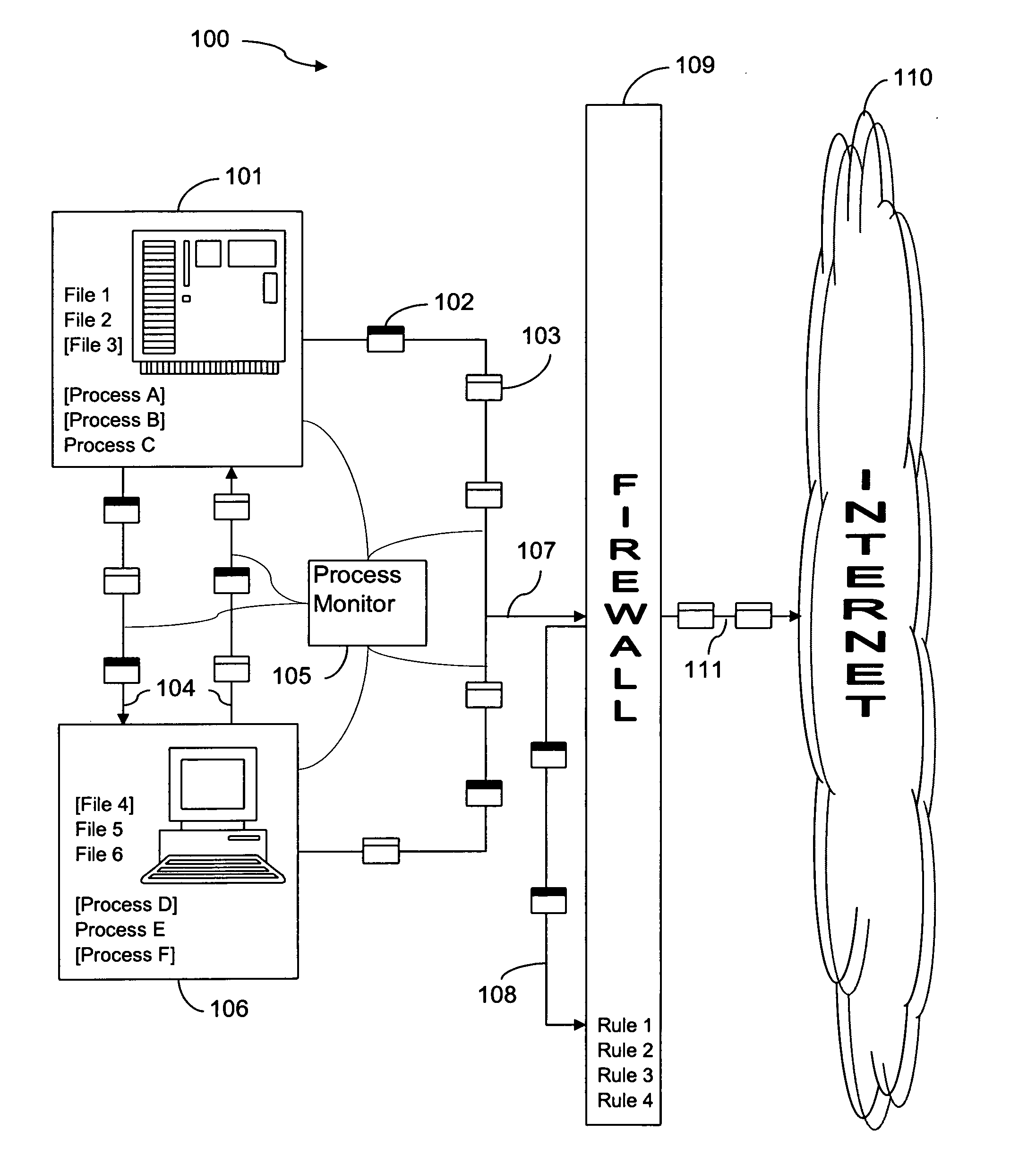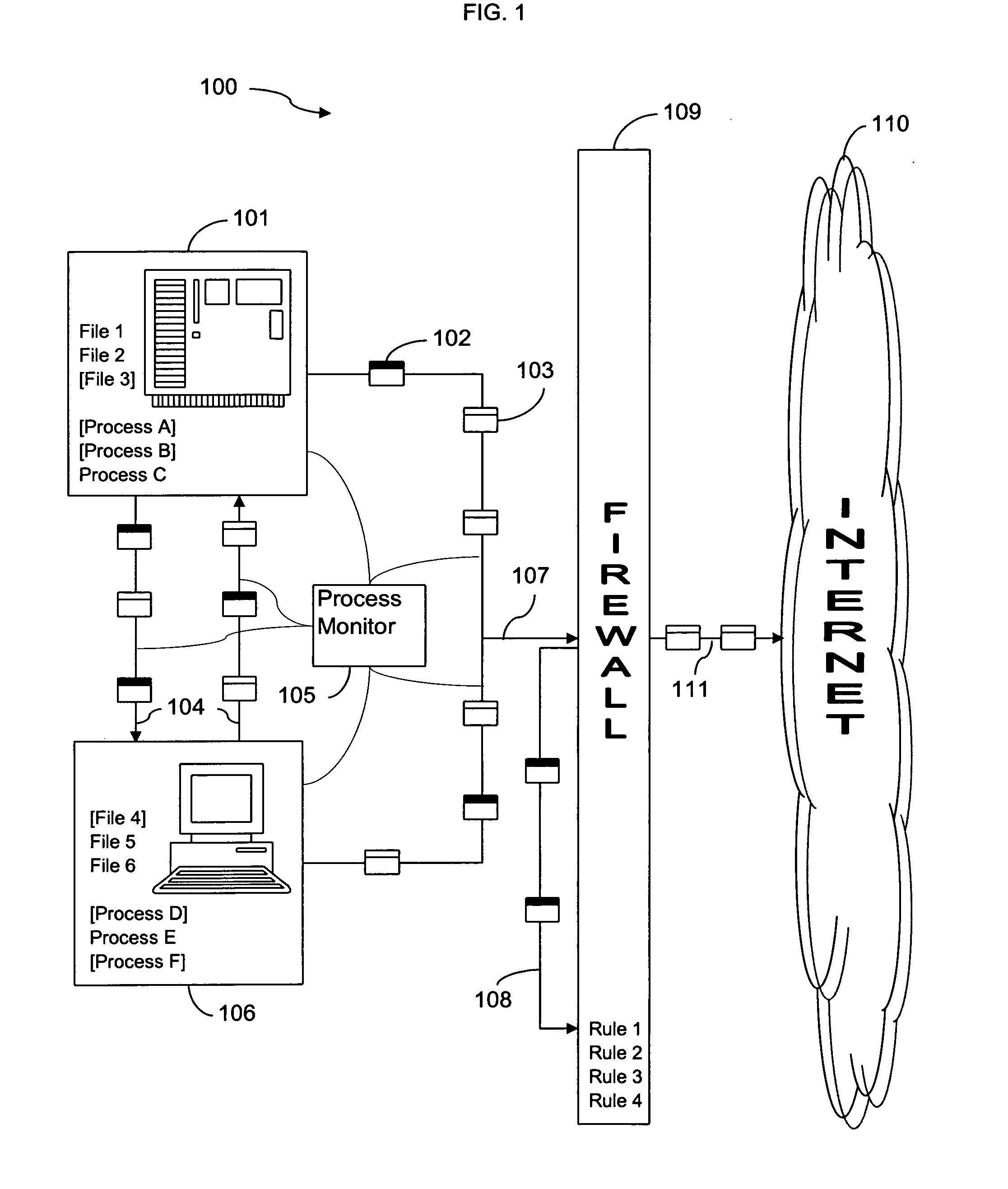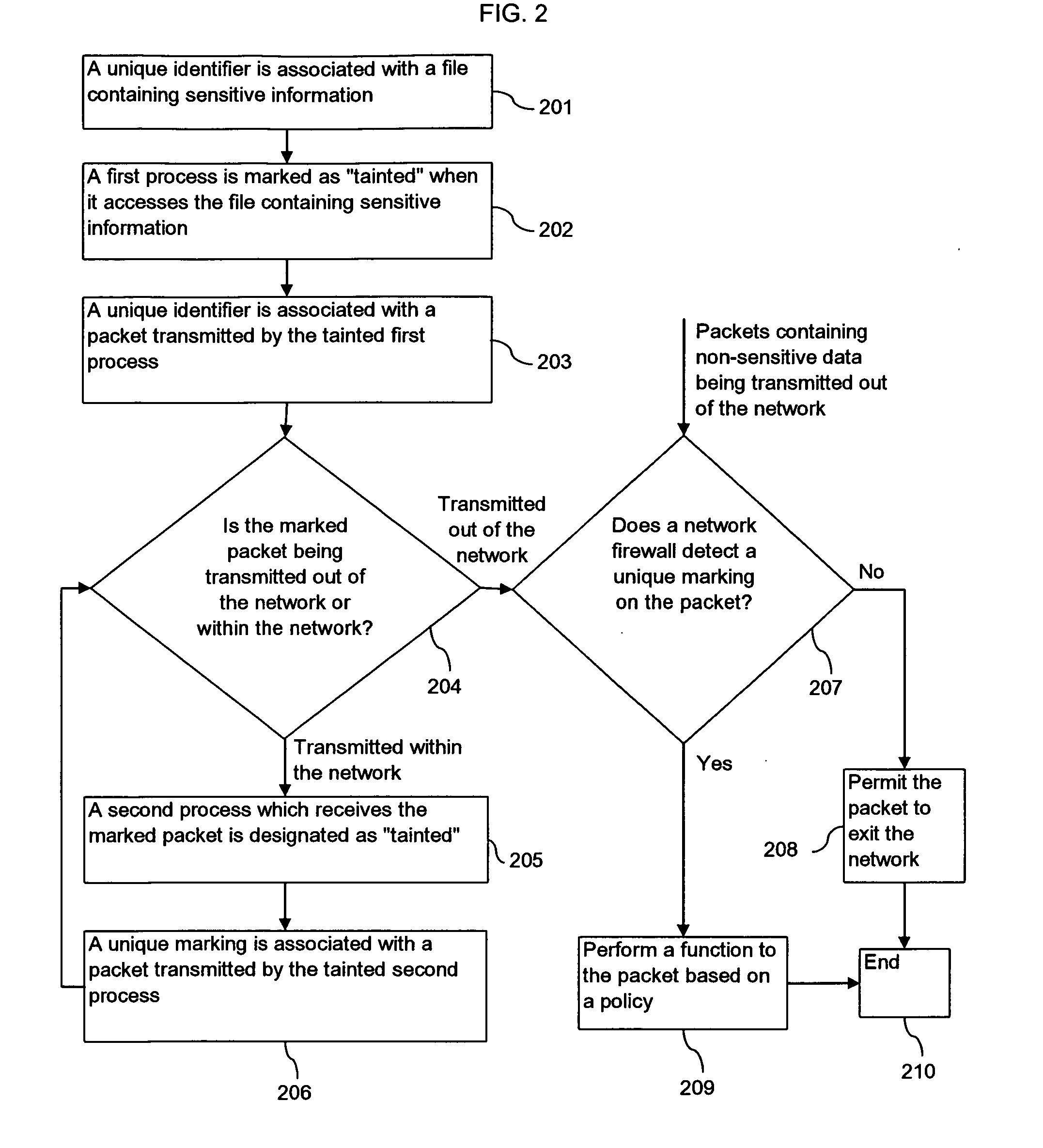Unique packet identifiers for preventing leakage of sensitive information
a packet identifier and unique technology, applied in the field of data monitoring, can solve the problems of recompilation of the kernel, high potential cost of a complete overhaul of the network, and the exposure of millions of people to sensitive information theft, and achieve the effect of facilitating the monitoring of packets
- Summary
- Abstract
- Description
- Claims
- Application Information
AI Technical Summary
Benefits of technology
Problems solved by technology
Method used
Image
Examples
Embodiment Construction
[0022]Exit traffic analysis for data leakage may be divided into two distinct categories, a) leakage prevention before any leakage and b) leakage detection after leakage (“post-facto leakage detection”). Current leakage prevention practices used in enterprises are largely ad-hoc without strong leakage guarantees and are therefore of limited value. They can be classified into five categories: (a) end-host level protection; (b) authentication servers; (c) data leakage gateways; (d) disk encryption; (e) policies. End-host prevention mechanisms involve setting up simple access control rules for users and data, with no security guarantees. Authentication servers act as capability-based servers with access control rules that are used to provide authorization to different users or processes before they can access any sensitive data. Their usefulness is fairly limited to the case of restricting adversarial users within the enterprise from potentially obtaining direct access to sensitive inf...
PUM
 Login to View More
Login to View More Abstract
Description
Claims
Application Information
 Login to View More
Login to View More - R&D
- Intellectual Property
- Life Sciences
- Materials
- Tech Scout
- Unparalleled Data Quality
- Higher Quality Content
- 60% Fewer Hallucinations
Browse by: Latest US Patents, China's latest patents, Technical Efficacy Thesaurus, Application Domain, Technology Topic, Popular Technical Reports.
© 2025 PatSnap. All rights reserved.Legal|Privacy policy|Modern Slavery Act Transparency Statement|Sitemap|About US| Contact US: help@patsnap.com



